|
In A Lonely Place: once, twice, three times. Acrylics, 16x20 inch, 2000 The Lusty Men (1952) Directed by Nicholas Ray. Starring: Susan Hayward, Robert Mitchum, Arthur Kennedy. Warning - plot spoilers! The extensive cuts made to The Lusty Men indicate that RKO studio was dissatisfied with the film. When premiered in England it was seen as a very American subject matter and because it didn’t do well in the U.S. there was a possibility for further cuts. The film is also not firmly anchored to any storyline. It is more wandering and discursive in tone. The sections that include the character Booker Davis, played by Arthur Hunnicutt, were cut for the British audience; these scenes are there for the ideology of the rodeo world being portrayed and as an exploration of character and not for the plot. The film is almost anthropological in terms of locale and character with no real narrative. Only one film critic, Manny Farber, registered any of its qualities. The Lusty Men has subsequently emerged as one of the highest in Nicholas Ray’s oeuvre. It is a modest film that looks ordinary at first glance but has more unusual qualities in many respects. The Lusty Men was made under ordinary circumstances but is not a streamlined, efficient production. It was the producer’s idea to film the rodeo and to ensure the availability of film star, Susan Hayward who gets the top billing. It was conceived of as a Susan Hayward movie who was only available for twelve weeks of filming and this was not during the rodeo season. The film went into production with no script and this was a common feature for Ray’s films. The whole film was made in the studio with the rodeo shots filmed by second unit associates. The film script was improvised after the opening setting. At a late stage of filming, it was decided that the film should end on Robert Mitchum’s death. Everything in the film prepares you for the bust up between Robert Mitchum (playing Jeff McCloud) and Arthur Kennedy (Wes Merritt) and the resultant death and “happy ending”. This fits into the norm for Hollywood films but because Mitchum's character is almost suicidal the resolution is not a problem. Ray reckoned the decision to kill off Mitch lost the film a couple of million at the box office. The story used in the film is a standard success story. This is a regular formulae in film and television and also in stories about sports and entertainment. A young man of talent is trained by an old timer. The young man goes on to achieve success but loses his roots and becomes arrogant. This arrogance leads to humiliation. The resolution involves him undergoing a change of behaviour. But the Lusty Men does not tell this story. Instead of having the rising star as the central figure, Ray focuses on the has-been side kick (Mitchum) and his emotions. The rags to riches story yields another story. It is about Mitch watching another guy have the success he once enjoyed. It has an elegiac quality. Robert Mitchum and Kirk Douglas make for interesting comparisons. They invariably play characters who are going to be defeated. Douglas has a spectacular downfall while Mitchum’s characters usually register dejection and are mournful. Mitchum is often the fall guy in film noir. In The Lusty Men, his Jeff McCloud character is a wistful country boy of limited intelligence. The role is not a huge departure. But what is unusual is one element in the plot; the story of the hero who consciously wishes the destruction of his best friend’s marriage. This is never seen in 1940’s films where a strict Hays Code and respect for marriage is observed. (Ray said to V.F. Perkins that it was just so natural and normal in the film, how could the censors object. You can get away with things by sheer modesty.) The originality of the film lies in the presentation of the character of Louise (Susan Hayward). This is one of the most interesting portrayals of a woman in Ray’s films and is unusual. The romanticism and the sentimentality in the film is attached to the macho world of the male characters. The film is acute about the pain of a macho rodeo life to both men and women. Hayward as Louise Merritt is a calculating woman. She is clear sighted whereas the men are romantically deluded. She is realistic about what to get out of life and with whom. Louise is not prepared to give up her life in the face of the male vanity being displayed in the rodeo world. She is a woman controlling her emotions to get material aims. A female character who displays this in a Hollywood film is usually presented as a schemer or villain; one thinks of Barbara Stanwyck. These are not objectives that are stereotypically ‘womanly.” She never talks about children or family. She doesn’t want to work in the “tamale joint.” This is a fresh interpretation of a female character. Another major aspect of the film is showing codes of masculinity which are presented almost as a theatrical show. The wildest show on earth is not the rodeo but masculinity. The film is successful in making rodeo work not as a lifestyle but as a resonant metaphor which harmonises the presentation of character. The rodeo is about capture and asserting yourself on the past. There is a constant repetition of imagery in the film. At the very ending, after Mitch’s death, a new man enters the rodeo world and there is uplifting music as the film ends for the umpteenth time. The characters are looking for “something they thought lost.” This is not conveyed in the reality of farming where arthritis and the hard labour of tractors are the norm. These have nothing to do with bronc or bull riding. As Wes McCloud becomes more involved in the rodeo, it is not jeans, but the leather rhinestone image that appeals to him. More and more, it is the Roy Rodgers cowboy singing image and not someone dressed for work. The song on the flag. “Old Glory”, and Mitch’s return to rodeo is an attempt to show his past glory. It is an ironic, repetitive, dehumanised rodeo. Ray expressed aggravation that the cruelty involved to get animals wild could not be shown in the film. Within the structure of the film, there is a dividedness which is common to Ray’s films. Here it is between the nomadic lifestyle and one of stability. In They Live By Life (Ray’s 1948 directorial debut) this is evidenced in the lovers on the run and Bowie wanting money to hire a lawyer to prove he is innocent of murder. In The Lusty Men it is about initially wanting to get money to buy a ranch. But Wes is seduced by the glamour and success and instead he buys a caravan which is the perfect 1950s symbol of nomadic lifestyle. In one sequence, Louise is shown sleeping and the camera tracks back to reveal her seated in a car. This is an image of her floating down a street. This theme is strongly registered in the character of Jeff (Mitchum). He is the centre point of this divided world, caught between the nomadic and settling down. This is best illustrated when he first returns to his old home ranch and rediscovers an illusionary security. The Lusty Men is one of the best triangle movies. It is all done modestly and treats this theme sensitively. The film refuses to makes its denouement tragic. The pain it is about is too ordinary for tragedy. The frustrated lives the characters lead are ordinary and we are never tempted to believe that Louise has spontaneous love for Jeff that is going to blossom. She is aware that what Jeff offers as a rival to her husband - stability, security and an unspectacular life - is never going to materialise. The relationship between Jeff, Louise and Wes is unstable. Both Jeff and Louise stand in a parental role vis-a-vis Wes. Louise is a mother figure as well as a wife: taking his boots off; the way Wes sits on the draining board wiping up the dishes. “He ain’t two years old and I ain’t his mother.” Jeff enters as a paternal role training the younger Wes. But when Wes is drunk in one scene, he comes up and pushes himself on Jeff, who then punches him down. They are almost forced into the role of a couple because of Wes’s character traits. Then Jeff has to live with Wes as an adolescent. When Wes discards his advice, Jeff is left alone. One character always feels outside this triangular set up that is reshifting in terms of dramatic relationships. There are a range of other characters who offer models for what the rodeo way of life offers. For Louise it is Grace: “Rodeo will make you an old woman before your time.” For Wes, it is Jeff and Buster Burgess, the latter offering gambling and drinking. Also Booker who is senile, almost mentally incapable of keeping up with the costs and demands of life. None however offer a model of success. Jeff has had success and learnt things. But the movie is consonant with other Ray movies in showing Jeff as simultaneously wise and informed about the ways of the rodeo, with a homespun philosophy where you “eat a little dirt if you have to,” while also substituting guts for good judgement. When it comes to the crunch, he is incapable of good judgement. What he needs and most feels, puts him on the path to catastrophe. Is it logical that his comeback is both a success and a death accident? But this goes with the modesty and unspectacular themes of the film. Jeff (Mitchum) is not a has-been and a wreck. He is not old enough to be a wreck. The death of Jeff is the film’s final form of disaster. Masculinity means you have to find out if you can still do it. You only find this out when you die. This is what the film says about competitive virility. The image of Jeff and his fate as an action image is one of eloquence, poetry. The film puzzles around images of mastery and control. The pride he feels is offered at the beginning of the film. Jeff is standing above the bull in the pen and the shot is composed as a stable frame. Thirty seconds later, the sequence of shots are wild and subjective. The hand-held camera is almost indecipherable. The stability and claim to control is undermined by Jeff’s fall. As an action image this is morally and philosophically pertinent to the themes of the film. 26/02/87 Lecture delivered by V. F. Perkins, University of Warwick, Film and Literature, Movies and Methods : Forms of Analysis
0 Comments
What would you do? Imagine your neighbour Heinrich Boll had left you a spare key and instruction to water the house plants while he boarded an aeroplane to collect a Nobel prize. Would you steal inspiration from the draft in his typewriter? Or Max Opuls had entrusted you, his dear friend, to retrieve a roll of film from his house; the one the censors didn't see in La Ronde. Would you leer at the said negative being held up to a bright light source? Kathe Kollwitz had to nip out to buy some milk and bread. Mischievous thought of adding a smiley face of ink to the desolate image in the printing press? The aforesaid fantasies were inspired after listening to an interview Holgar Czukay gave in the early 1990s on the Radio 3 programme, Mixing It. He recounted how as a student of Karlheinz Stockhausen in 1968, he sweet talked the secretary and gained access to Herr Aladdin's electronic cave. Holgar was able to record his debut album, Canaxis 5, with the studios impressive tape recorders looping together his interest in Musique Concrete and ethnographic folk recordings. Not all studios live up to their profession. In point of fact, given the relative poverty of artists, they invariably have to beg a shed, borrow a broom cupboard or steal a loft. I have only had one bonafide studio. This was once a 1960s council flat (bedroom, living room and a kitchen) and came with the responsibility to practice community art. An author might build a studio around the typewriter on an heir loomed desk or a poet might dream on a hammock in the garden. Maybe virtual studios will one day be the norm for web based artists. The creation of an avatar, perhaps even adopting the identity of the Germanic artists I have already listed. Expanding on this chain of thought -what about that elusive key to the artist's mind?
Script for This-That by Jacob Barua. Printed on continuous feed paper, Warwick University science block.
I am navigating back to 1989 and the University of Warwick. My fellow Film and Literature student, Jacob Barua, has handed me a film script and declared emphatically: you are the only person in the universe who can play this! I hesitated. Had never acted before. And then there was the troubled central character in the drama who seemed all too recognisable; forever on the edge of everything, nothing, relationships, art, politics. This begged the following question: Jacob are you taking the piss out of me or yourself? For a short period of time we seemed to swap identities. Jacob’s intense cinematic vision became one with my suited and booted persona. Jacob was going to use this short film to catapult him into the prestigious Lodz film school. But it was no plain sailing. No film production on this dramatic scale had been undertaken at the university where theory ruled the day. It meant sniffing out equipment and resources. After two weeks of filming, a mere two days were spend in the edit suite, using equipment for the very first time. I recall a few expletives. We had set the date of screening, one day after the final day of editing. A key animation sequence shot on 8 mm film only arrived on the day of the screening and had to be added post-haste, post end-credits. Thankfully this has now been re-edited into its proper place in the dreaming body of the film. We finally have the keys to the digital edit suite. It's only now after 26 years and working together again on restoring the fading VHS tapes, that we’ve got a new grasp on the importance of this film for us. Let me leave the final words to Jacob Baura who was recently interviewed about his Warwick experience. What on heaven or hell was he thinking about when he made This-That?
Jacob Barua:
"The reason I wanted to become a filmmaker, did not have that much to do with film per se. I had always been enthralled by Art itself in all it's aspects. I had been a poet, a musician, a painter, photographer, amateur actor, but probably loved literature most of all. Somewhat like a brat with his hand in a jar full of goodies, I did not want to let go of any of the Arts and decided that there was was only one vessel that encompassed all of them. The only way, in which I did not have to discard any, but instead fuse them, was through the glowing medium of film. I arrived in Warwick...by mistake. One of my obsessions when it comes to the written word is History. Right until today I often wonder whether I am a self made historian expressing myself and researching through film. Warwick conjured in my mind the mystery and glory of medieval times. I was convinced that the University of Warwick was located somewhere within the town of Warwick. In those pre-internet days, a major source of information were brochures. And the university's were filled with images of Warwick Castle and the old cobble stone streets. That was enough for me to decide, given that it was simultaneously the only university offering such a broad course encompassing foremost literature and then film. I got off the train in the quaint railway station only to be horrifyingly informed that the university was far away in some fields between Coventry, Leamington Spa and Kenilworth! I found the course at the university to be exhilirating in it's scope - exactly tailored to my needs. Great lecturers and given the small size of our department, an opportunity to bond with colleagues. The university also happened to probably have the largest independent Art Centre outside London, at the time. There was everything ranging from a philharmonic orchestra to to a cinema with plush seats and a sterling screen, to one of the best equipped professional theaters anywhere in England. Here I was active as a member of the Warwick Drama Society, taking on delicious roles for the duration of my studies. Besides, the university was a beehive of political activity, of all manner of shades. Of course I was aghast that the most prominent ones were for naive fellow travellers of all manner of totalitarian off shots. However the jewel of this mini-city was a massive library, with a salivating wealth of books that was beyond belief. This-That was the result of a deep inner need to encompass my entire experience as a student who had lived in different countries, cultural and political systems. At the same time I set to creating a time capsule to be sent into the future. All Myths were after all created by somebody, even if that was thousands of years back - so why not make one too, there and then, to be flung into an unfathomable distance? My inspiration for the main character was essential to creating a core, and this was based, at least in terms of the visuals on a readily available 'blueprint'. For I used Warwick's most enigmatic and unique real life student - Constantine Gras. He did not fit into any preconception - as he neither had the persona of a typical student, nor even one from any 'civilian' from our contemporary milieu. Here was Someone who seemed to have been historically misplaced, from a 'wrong' age. Like a potter I used him as my clay, to impose onto him a narrative, which I knew would jar when combined with his persona. So here was a man creating himself i.e. Constantine, whom in turn I was creating further. Layers of creation. One of the overarching themes is the struggle that each human has to undertake to find a space of comfort, to be able to be oneself, while struggling against the dominant societal forces. By comfort I do not at all refer to a personal one, but that of the Other. For the most crucial single question ever spoken for me, which forever thunders across all ages is; "Am I my brother's keeper?" We live in a world circumscribed by political correctness. The moment you challenge the narrative of the day, you are deemed fit for condemnation and rejection. In the case of the film, the character not only isn't ascribing to Modernity and the race to keep up with fashions both external and internal, but occupies a realm that defies the obligatory 'standards'. He is still both a reflection of the Ancient, Romantic and Future ages. Whether we like it or not from the beginnings of History, politics impinge on almost everything in life. That is why the culmination of the film is congealed within the incongruous figure of a young pyjama clad student who dares to take on the Rulers of the World. The selfish manipulators - the Daeduluses vs the selfless dreamers - the Icuruses. If I were to try to draw a circle; Sleep - Pyjama - Dream - the Impossible - Courage - Death - Eternity - Sleep.
The reception of the film, I will admit, was heart breaking. An outright regurgitating by the audience. Particularly so - when not even our lecturers or collegues could grasp or extract any meaning out of it. But this should have been expected, as it was intentionally put together in such a way as to defy conventional modes of film-making. And again, it was indeed a film made for Another age. But which one? Time will still tell.
I have no regrets about the film as it was then, and in it's curent slightly re-edited form. It turned out prescient. You are Alone among people. To be fulfilled you have to metaphorically fly, even if demise is the price to be paid. There is no escaping Newton's and other more serious Laws. But just like there was no relevant message in the film for the audience at the time, there similarly isn't any for those today. There are plenty of other better sources, dear audience member, if you are in need of a message. This is not a cerebral feast but mainly a sensory experience. Once I got there, one of the most satisfying experiences at the Lodz Film School was when all students were herded into a cinema, and made to watch the film by Piotr Wojciechowski; he was a Filmmaker, Scriptwriter, Catholic Philosopher but most of all a living legend as a novel writer ("Skull within a skull", "Is it worth to have a Soul" and others). He immediately took to the film. In his laudatory lecture after the film, he said he felt it had the feel of T.S. Elliot's " The Waste Land". He was the first ever viewer to fully comprehend the ambitions of this film. At the Lodz Film School I carried on with the 'tradition' of making This-Thatian films. With no pretence at all. Poland's greatest ever fimmaker, and it's Chancellor Wojciech Has, would always chide other lecturers for being baffled by my films - telling them that they were wrong to search for conventional meanings in my short films. For him they were "Intricate riddles" I don't really have any wise tips for aspiring filmmakers. Rather warnings, in that it is going to be a lonely, cruel, and ungrateful journey, except for the very, very lucky few. Well, take heart - at least there's going to be one worthwhile viewer of your creation - Yourself. Having been trained on 35mm makes a filmmaker by far more disciplined and honed to the workings of a film. The Digital Age has its own advantages. But the downsides are greater. More self indulgence and turning an important medium of Art into a toy. I have been a gardener for a long time now. There's at least one massive film within me waiting to happen. Then I intend to go back to my gardening. It's this and that, after all." If you want to experience This-That, the film is screening on: 10th September 2016 around 7.30pm Muse Gallery, 269 Portobello Road, W11, London Portobello Film Festival Full venue and programme details. This-That Trailer from Constantine Gras on Vimeo. It is with great sadness that I have just received news of the recent passing away of Victor F Perkins. He co-founded the film department at Warwick in 1978 and made a decisive contribution to the acceptance of film as an art form worthy of deep study. I have fond memories of him hunched over the Steenbeck undertaking a close textual analysis of In A Lonely Place with 2-3 students; a more kinetic Victor was found over at the Student Union playing his favourite pinball machine; delivering those impassioned lectures where he poured his intelligence into the vessel of a film; seeing so much nuance in terms of decor and edit, so much so, that I seem to recall, at the end of one lecture, Jacob asked: is it really possible that the film maker meant all this? Victor bough a copy of This-That in 1989 for the university archive. It was always a pleasure to meet up with him over the decades since I graduated. Alas he missed the screening of the remastered film at the university in March 2016, but I was touched when he specially came in to see me and we had a good chin wag about life: how he was adjusting after a recent stroke, his desire to learn the German language, his concern about the corporate development of education and his cluttered honorary office in the department which he really should tidy up. I told him that we had dedicated the film to our old lecturers who had inspired the young to fly. Victor had a rueful smile. This-That returned to Warwick University on 3rd March after a hiatus of 26 years. The film was made by Jacob Barua and myself in 1989 when we were third year Film and Literature students. It was screened as part of a programme celebrating filmmaking on the campus over the past 50 years. The film was presented as work in process and so the feedback from contemporary students was invaluable. What did they make of this dramatic portrait of an enigmatic student who finds transcendence in Greek mythology? Bertille Outhat: "Your film really worked on me, made me anxious. Also, I was impressed on how the editing was good, the juxtaposition of shots. The music is really powerful and emerged me into the images. Well done!" Alexandre Rougle: "Really nicely shot and very well filmed. The mysterious character is keeping us interested to see more but also leads to incomprehension which can lead to boredom at certain points. Music cuts really well at all the scenes. Really like the scene in the cafe and bar and the background voices. The text could be better used I think." [The latter a reference to the graphic typewriter effects used to evoke the disorientated state of mind of the student-poet who is the central character of the film.] Estelle Botbol: "Very nice job. Interesting atmosphere although too mysterious for me to understand. Loved the background sounds and music and the colours. Very mysterious!" Nathalie Caiman: "I found the film to be very interesting, despite somethings that I could not really understand to the fullest. It’s very moving. So This-That film making around campus was already a thing in 1989 and that it is still going on nowadays. The music was also beautiful and enriched every scene to make them even more vibrant." Geoffrey Mugford: "Suggestions for improvement: cut half the running time, adjust sound levels as there were some slight sync problems, market as vintage / charming out of time campus and think about colour grading (if possible)." This is all food for thought, especially as we received very little feedback from the 100 students who saw the film all those decades ago. Our student film is dedicated to those who taught us to fly and it was poignant to be reunited with both Charlotte Brunsdon and the recently retired Victor F. Perkins who is the founding father of film at Warwick. During my return to campus, I was searching for the name of music bands that featured in the film and whose identity still eludes us. We want to pay tribute to them in our rolling end credits. The Boar is the student paper for the campus, but alas the copies for April 1989 were not present in either the union's own archive or in the Modern Records Centre. If anyone can shed light on these musical performers, please do not hesitate to contact me. Do you know the names of these 1989 bands and musical performers? As one would expect there were tremendous changes to the campus: a student population nearly trebled to 28,000; new buildings or adaptions to buildings, most noticeably a revamped student union; the ubiquitous Costa coffee; Amazon delivery lockers. But the beating heart and philosophical soul remains the same - students at an exciting juncture in their adult lives. In the late 1980s' politics revolved around the Apartheid regime in South Africa (Nelson Mandela bar has long gone), the Tory government introducing the first proposal for student loans and what features most noticeably in our film, the unravelling of the Communist bloc in Eastern Europe and the student protest movement in China. As This-That was once again being screened, the campus was aflutter with students campaigning to become the next Sabbatical, Liberation, Faculty, and Environment and Ethics Officers as well as elected delegates to the National Union of Students Conference. As our film dramatises the alienation of a student, it's reassuring to witness the activities of a new generation as they shape power structures and build a new future. For the past 6 months I've been working with Jacob Barua on the re-mastering of a student film called This-That. We have grappled with the digital transfer of 1989 VHS tapes and this process has rekindled our trans-continental friendship between London and Nairobi. It has also had us shedding old skins as we revisit academia as Film and Literature students at the University of Warwick. The film is distinctly autobiographical weaving in the poetic and political, cross dressing and referencing all manner of allusions and illusions. It's a quintessential student flick filled with angst and metaphysical cravings. Let me tell you about our musical odyssey. Although I'm not a trained musician, music is essential to my art and film projects. Check out my homage to vinyl records. For the past five years I've created short sequences of music for my films, often using a pseudonym called Ewa Sikorski. When it came to extended film scores I worked with other composers and musicians: Laurence Eliot-Toms constructed a percussive jazz-tinged-score for Flood Light; Roberto Bove's electronic guitar vibrates through Vision of Paradise. This-That is the first time I've attempted to both score and sound mix a film. I have no fear of improvisation and overdubbing was my principle as a piano keyboard was hooked up to an array of Garageband instruments. Needless to say, this work in progress has not been plain sailing. One area that needed a complete overhaul was the musical score. The original was a selection of 1980s mood pieces in the style of Vangelis and late Miles Davis. However the guiding spirit of the film was a short extract from Monteverdi's Vespers of 1610 called Duo Seraphim. For copyright reasons the original music has been excised and replaced by a less punchy, but definitely more unified score. The new recording of Duo Seraphim was movingly performed by two tenors from the Queens Park Singers, Cathie Hammond and Théo Hénusse. For the film, I have endeavoured to create an over arching theme and to provide variations throughout the thirty minute running time. While the central character in the film has very little to say, he is constantly hearing discordant sounds and the visionary singing of Monteverdi's angels. There are also specific visuals that required a subtle use of musical counterpoint and the dramatic sound of silence. This-That is about an isolated and alienated student and the score had to capture this off-beat tempo. Piano and harp in various combinations were used to evoke the ethereal atmosphere in which a student has fallen down to an ivory-towered world and desires a transcendental escape. In between lectures and library sequences, there are oriental themes that tie in with the then contemporary student movement in China, chants that are associated with the central female character and what I consider the best writing in the film, the dream sequence, where a delicate array of electronic voices is set against some poignant phrases from the Duo Seraphim: "Two seraphim cried to one another." Why and how Monteverdi? In my third year at Warwick, I studied a musical module that was run by Rowland Cotterill that showcased his wonderful keyboard playing. The first piece of music on the course was Monteverdi's Vespers of the Virgin Mary and I was immediately bowled over by the expressive diversity of 13 separate pieces (15 if you count the plainsong in between) that are unified by a compositional virtuosity of style. As Jacob and I were in pre-planning for the film, I dragged him over to the music centre and we listened, spellbound, to the Duo Seraphim extract on a scratched vinyl record; incidentally, Warwick university has no specialist music department and it was through the efforts of Rowland that music was kept on the teaching agenda. Good on him, lucky me and blessed This-That! In the past year, Jacob and I have been considering other composers and musicians, but in many respects, I was best suited to provide the inner musical phrasing for the central character. In real life, I was that young introspective man. Yes. Him was I. In my youth, I always wore a three piece suit, trilby and either Oxfords or heavy duty boots. Jacob had drawn on my real-life persona to construct this semi-fictional narrative. Like many young people and creative artists I was going through a phase of rebellion against main stream culture and establishing my own identity in dress that included the thunderous sound of boots with cast iron heel and toe points. Part of that Neo-Romantic play of costume in the 1980s was certainly influenced by the fashion and musical legacy of the late, great David Bowie; definitely more Thin White Duke than Ziggy. I have attached the first few bars from the Duo Seraphim and also the opening tune minus the sound effects. You need to imagine this delicate structure of voices, piano and harp announcing the arrival of an enigmatic student who has arrived at Warwick University and where the military stomp of his boots collides with birdsong and fellow students. The musical and narrative journey will complete a full circle. After a labyrinthine student union-ball scene that is punctuated with footage of the abortive chinese student movement, Him will return to nature and the opening theme will be reprised. The last shot of the film has an ascending piano scale with both the sound of marching boots and the tap, tap, tap of a manual typewriter. All of these prepare the way for a final complete rendering of the Duo Seraphim which takes the viewer to another plane of reality; one where 'this' could quite possibly be 'that'. This-That will be screened at the University of Warwick on 3 March 2016 before doing the rounds of film festivals. The trailer can be viewed online. The confrontation of Them, Her and Him over a suitcase that contains unexpected objects - sacred and profane.
A film can haunt you in many different ways. In 1978, an excited boy and his overworked parents trek down to the Odeon, Leicester Square. No, not the previous summer-smash Star Wars, but it's more domesticated twin, Close Encounters. Inspired by The Third Kind, he would travel home counting every twinkling light of air traffic as an alien ship passing in the night sky. A fifteen year old is skipping across the ground level section of Westway (A40) and bunking into an X-rated double bill of Terror and Savage Weekend. It's 1981 and the last gasp of the ABC cinema at Edgware Road. Young men are performing a ritual of daring each other to grin through slit throats and dismembered heads. Jump cut. That boy-teen-man is now projecting a 35mm print of Peeping Tom to sleepy film and literature students at the University of Warwick. He is anxiously waiting for cue dots to appear. After effecting a change of reel, seated alone beside a small aperture in the booth, he looks out across the illuminated heads, several bobbing down to new planes of consciousness. The projectionist is transfixed by the imagery on the screen showing a movie camera that has been turned into a deadly weapon. Yes. Those are all my hauntings and they still persist to haunt. This year of slow motion into middle age has lead to a reappraisal of the Italian director, Mario Bava. His richly lensed films were discovered online where there are collective opportunities for the young and old alike to be haunted or re-haunted. This past year has seen the passing of the great Christopher Lee. I kept YouTubing majestic scenes from Bava's The Whip and the Body. In particular, there is a compelling sequence when the heroine is being drawn to the S&M ghost of Lee down a darkened corridor by the constant cracking of a whip. Cinematic magic. As a practising multi-media artist this "haunted" quality only manifests itself in drawings and unpublished or unrealised screenplays. I share a few of the former with you. Although my lips are temporarily sealed on the latter, I do wish to share a few thoughts about a seasonal haunting, Quatermass and the Pit (1967). QM is a great British science-fiction film, bristling with bold ideas and told in a vivid fashion. The electronic sound effects by Tristram Cary, combined with effective direction by Roy Ward Baker and compelling performances, makes this a haunting of hauntings. The film is also part of the rich cultural tapestry of Hammer studios before that fizzled out in the 1970s. An older generation would have experienced the Nigel Kneale's Quatermass stories (of which Pit is the third in the series) when broadcast by the BBC in the 1950s. These are rightly regarded as landmark moments in British television. Enthusiasm aside, I want to talk about the haunting engendered by Quatermass and the Pit. This has a very specific past, present and future. Past tense. I have a ghostly memory which can be precisely dated to Christmas Day, 1973. This turbulent period in British politics would see industrial disputes, three day working weeks, power cuts, and a country grinding to a halt. I can still feel the bones of those darkened and cold spaces. This was the perfect setting for an impressionable seven year old to be spooked on Christmas Day when Quatermass and the Pit was shown as the main late night adult film on BBC2. I seem to recall watching this film alone. Where had my family disappeared to? Had they been swallowed up by the gut of seasonal excess? It matters not, for the film exerted a pulsating grip especially in its claustrophobic evocation of the London underground where a mysterious object is discovered and which unleases atavistic impulses in the human mind. Present tense. As a homage to that 1973 haunting, I decided to photograph a recent transmission of Quatermass which took place on 20tht December 2015. Towards the end of the film, the television underwent a spectrum change with its cathode ray tube. The green light waves completely swamped the reds and blues. I am still trying to interpret the significance of this haunting and I present documentary evidence for your perusal. The TV box on the following Boxing day was as right as rain. Future tense. Quatermass and the Pit is older than Time Lords and Jedi knights. It is begging for a new leash of life and I wonder if the current Hammer Films might be thinking about a re-make. If they do, they will be hard pressed to beat the original TV and film adaptions. Special effects will be a different kettle of fish however. Hopefully a new generation of writers and film makers will discovery the original and use it as source material to create their own narratives. I've just started mapping out a new screenplay called Glass Kill in which medi-EVIL stained glass is discovered in the London underground. Hauntings can come in all manner of tea cups or flying saucers and is not exclusive to the horror genre. If you want to catch a fascinating blast of gallery based hauntings, I point you no further than the sublime Susan Hiller who is showing at the Lisson Gallery until the 9th January. She has described her work as an "archaeological investigation, uncovering something to make a different sense of it." Here you will find an eclectic probing into the real and the unreal, the memory of ghosts and the ghost of memories. Of particular interest is Wild Talents (1997). This is a multi screen video installation that shows paranormal phenomena in a range of American and European horror films and this is juxtaposed with a small monitor showing a documentary about children who have religious visions. Three sets of images are unfolding in the same time and space. Haunting is all about the co-existance of past, present and future. Quatermass and the Pit airs next on the Horror Channel on: Thursday 31st December @ 22:55 Saturday 23rd January @ 22:00 Wednesday 27th January @ 22:00 For the past few months, I've been re-mastering This-That in close collaboration with the film's author, Jacob Barua, who lives in Kenya. To recap, This-That was made in 1989 when we were both third year Film and Literature students at the University of Warwick. It is a fictional drama about an alienated student who finds transcendence in a stone figurine. It was my first involvement in a film project and a great all round experience on the acting, editing and production front. The film was screened twice at the university in 89 but was shown more as a rough cut. We had not devoted enough time (days rather than months) for the edit process and a key animation sequence, shot by a security guard on 8mm film, could only be included after the end credits for the second screening. The film was seen by about 100 people on a 10,000 plus student campus. As there was very little feedback, we always assumed it left those select few stunned in a cinematic stupor. It received more rigorous scrutiny when projected at Lodz film school where Jacob subsequently enrolled. One Prof likened it to a visual tone poem in the style of T.S. Eliot's Waste Land. It has taken us a full 26 years and the occasion of the 50th anniversary celebrations at the University of Warwick to do justice to a film that gave "students and classics a bad name" according to one apocryphal review. The master VHS tapes were stored in the perfect micro-climate of Nairobi. Natural deterioration of the magnetic tape has resulted in some contrast loss and discolouration, especially noticeable in shots of the sky. Jacob attempted the first digital transfer at a Kenyan edit suite but the DVD files he sent me were poor. The tapes were then couriered over and I had a Kodak lab transfer them into AVI digital files or such was the theory. Despite several efforts, this lab could not perform a professional service and the files either had an interference signal or no sound, and even more lamentably, were unable to open up in Mac as Kodak were using Windows based systems. Refund time. Third time lucky and another lab was able to get a clean digital transfer from the VHS. They also cropped in slightly to remove the flickering decay at the edges of the 720x576 video resolution format. While we may have attained a state of grace with the imagery, the sound track is still a work in progress. There are plans to completely re-score the film and this will hopefully be accomplished next year, perhaps as a commission for a young music student or budding composer at the University of Warwick. I believe the film holds up incredibly well and this is testimony to the mystical cinematic talent of Jacob. The biggest challenge however were the labyrinthine sequences shot at the student union and fancy dress ball. This rightly gets the scissors treatment and is now more tightly interwoven with the preceding and concluding scenes of dream and spiritual release. Both Jacob and I wondered whether Him (the name of my character) should speak in the new version; we could have added an interior monologue. Sensibly we have stuck to the original conception and have maintained a quality of enigmatic silence. I only utter one "rosebud" word in the film. This-That is very personal and akin to watching myself through a looking glass. There is some loss of light transmission (not digitally induced) but it is strangely reassuring to see a twenty-six year younger version of your self. I am dressed throughout in 1940s suits and trilby; that was my fashion throughout the 1980s and 90s. I was and still am haunted by Greek mythology (it is in my cultural DNA after all) and this is offset by events on the political stage. Those events of 1989 involved the collapse of communist walls and the abortive student-lead Democracy Movement in China. How did the young of that world react to their elders? In the film, we have an off-key portrait of a student, a budding writer who is literally lost for words. For him there is no solidarity with peers or the possibility of creative action, whether individual or collective. The figurine he reaches out to grasp contains some unknown or primal connection to a past-present-future. If there is a message at the close of the film (no spoiler alerts here), perhaps it is that our everyday actions and infrequent visions do not need to be held in temporal check by a freeze frame or fade out. We can edit and we should direct our own lives. I sincerely hope there are not too many alienated students amongst the current generation at Warwick that numbers in excess of 25,000. How many of them will be experiencing This-That? This-That will be screened in Spring 2016 at its spiritual home. Event details. Digital restoration has been supported by a grant from the Centre for International Theatre Development. This-Trailer trailer.
|
Categories
All
Archives
May 2024
|
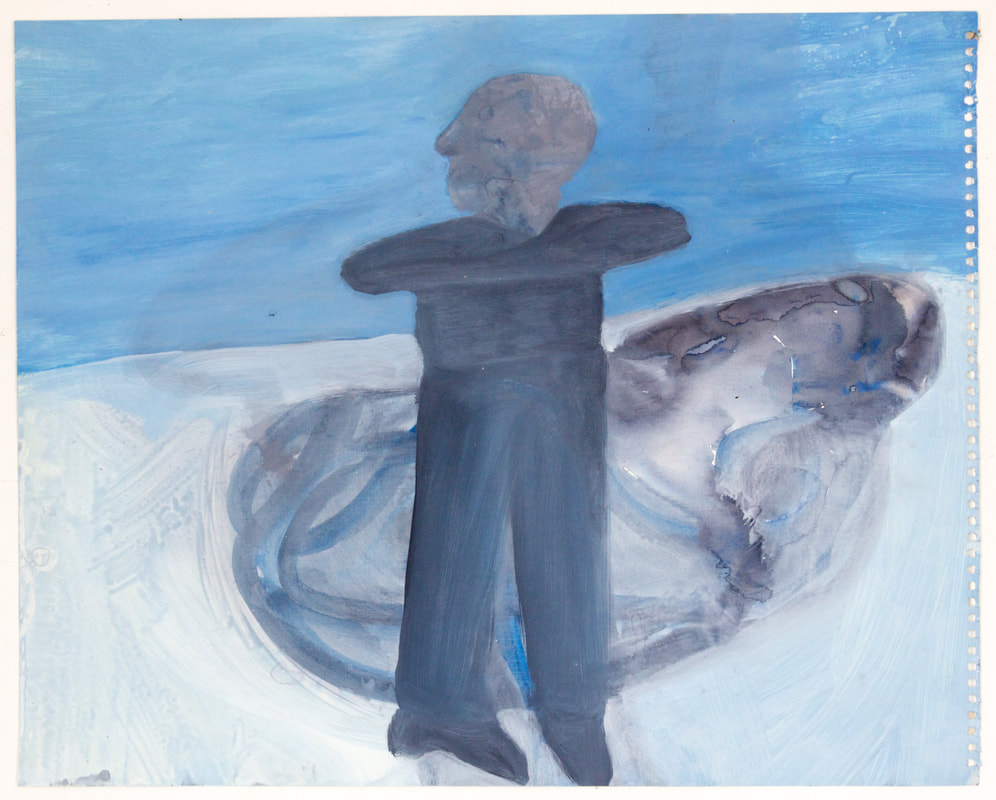
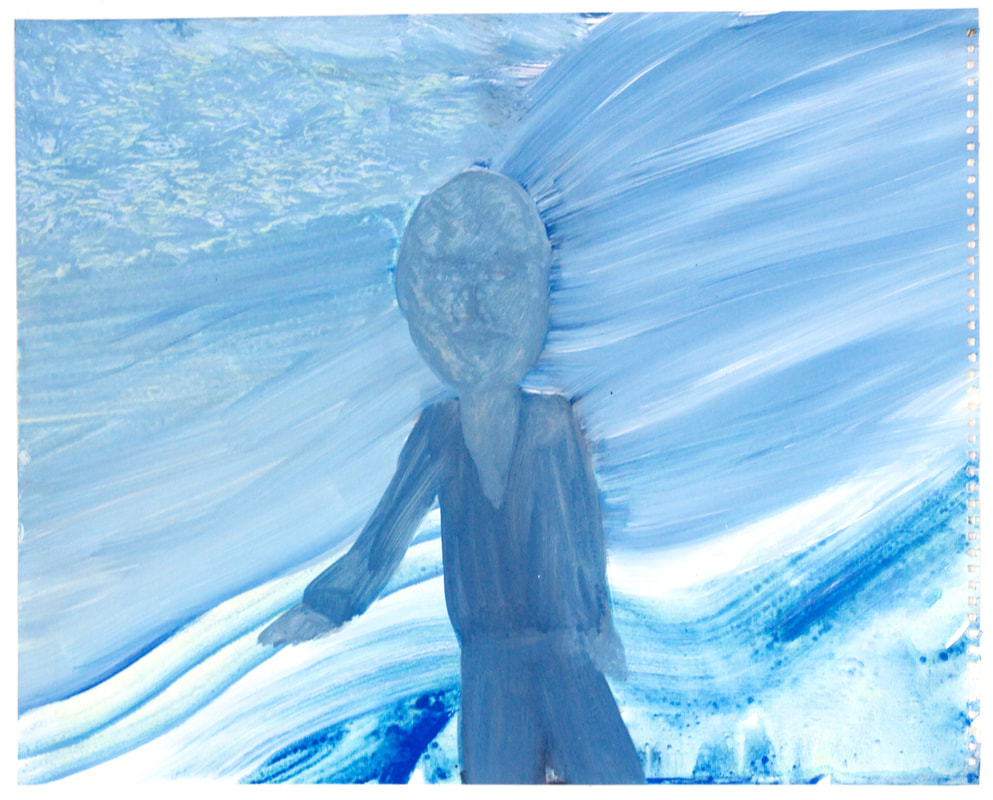
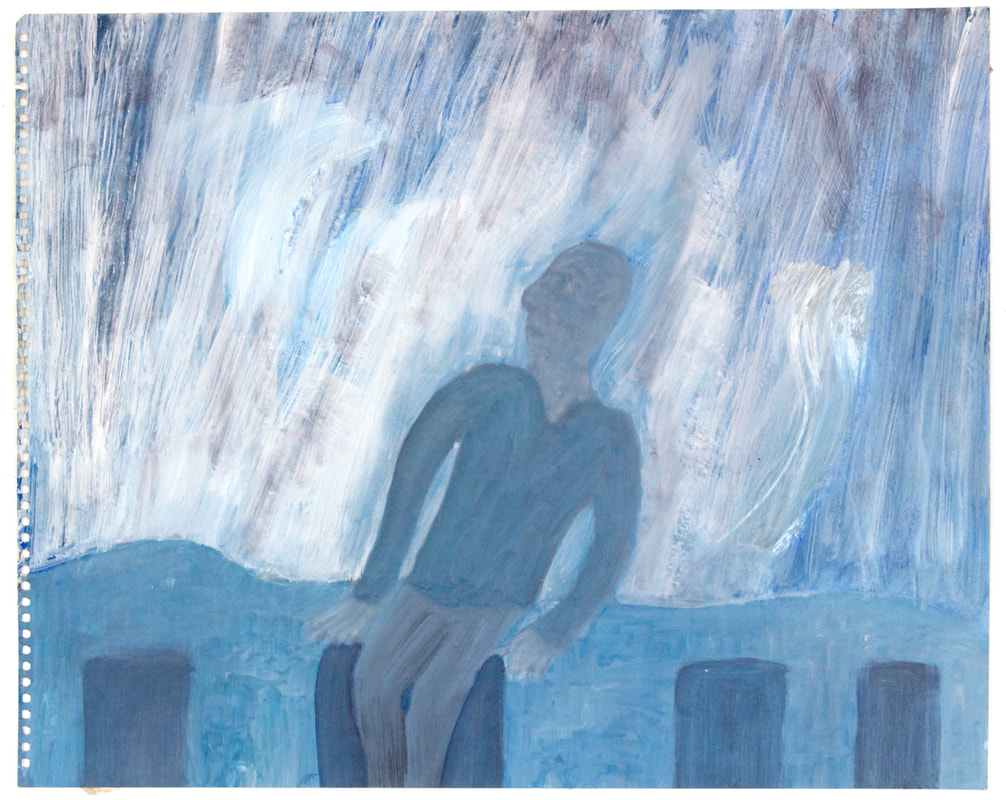
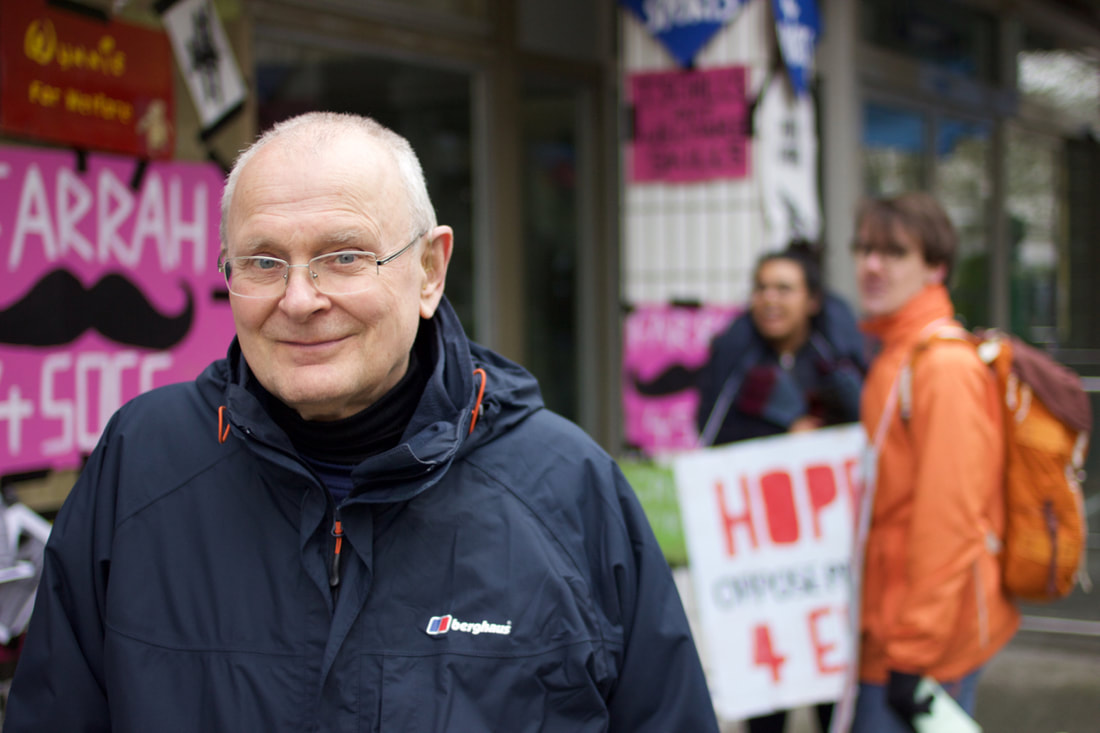
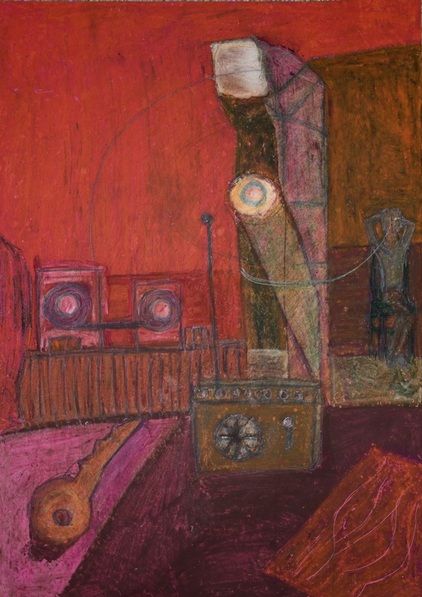
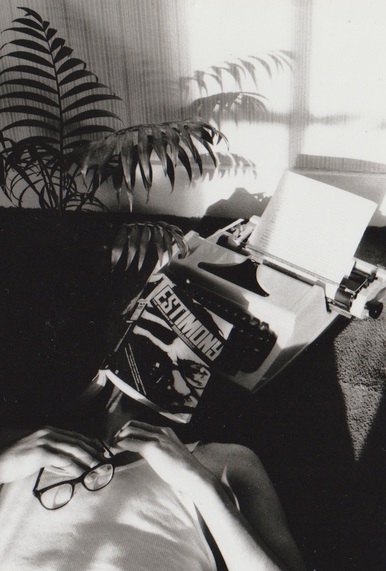
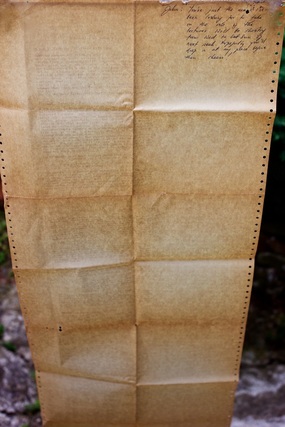
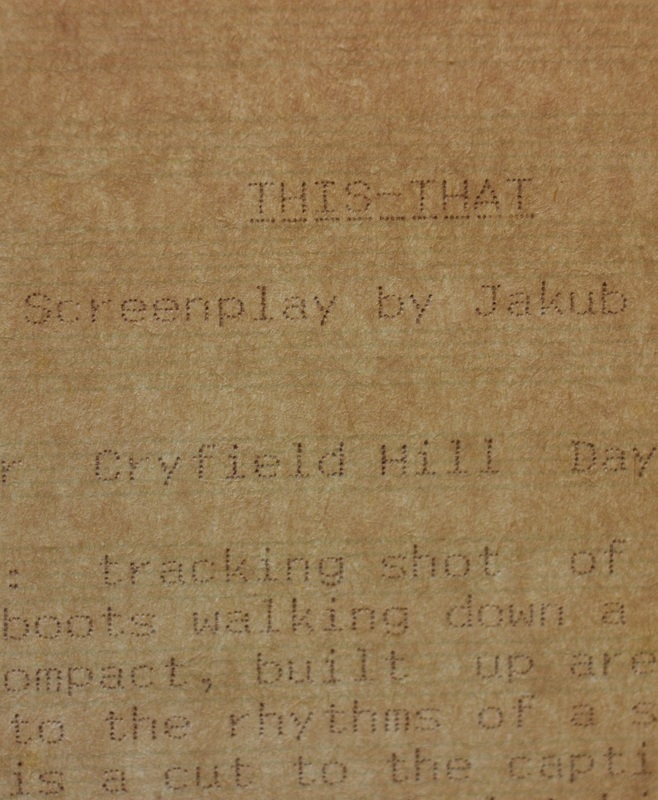

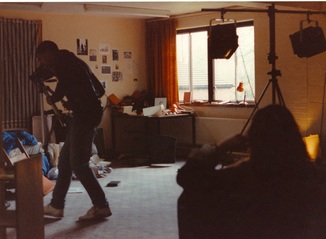
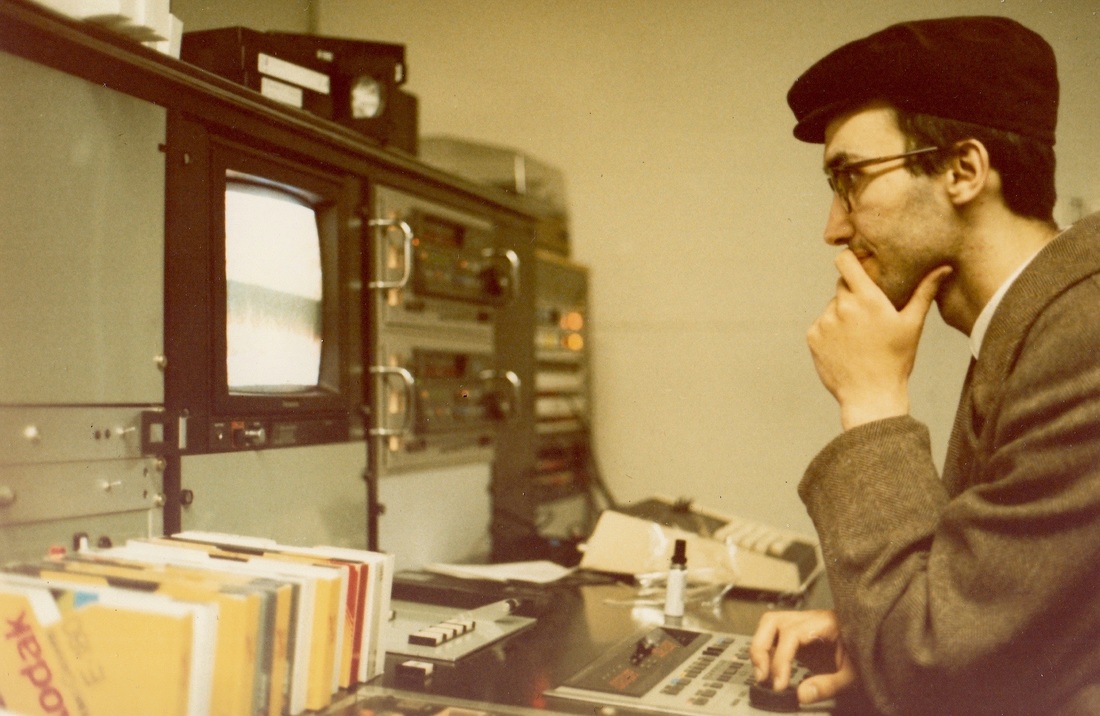
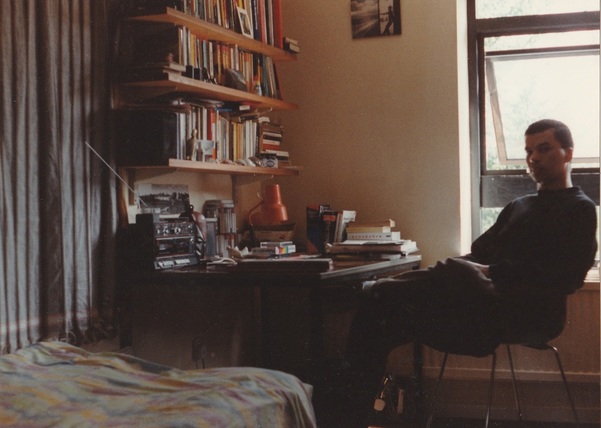
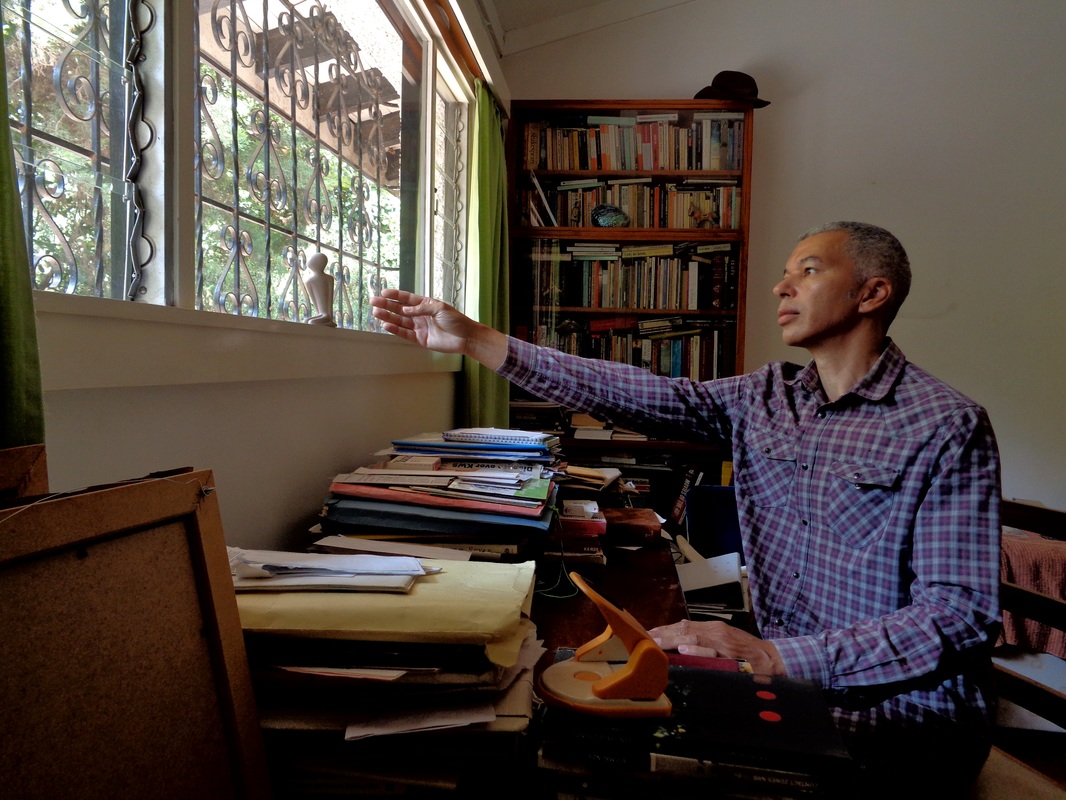
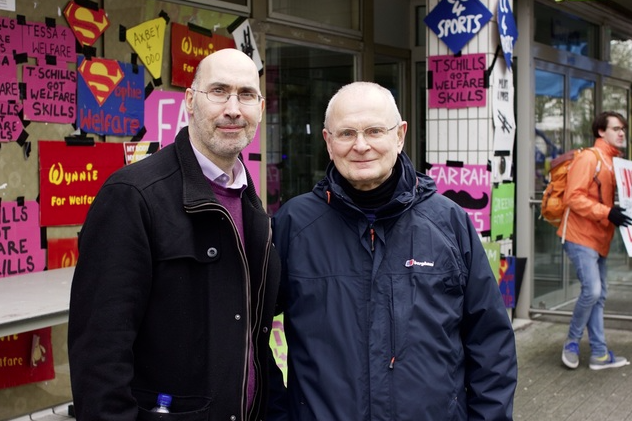
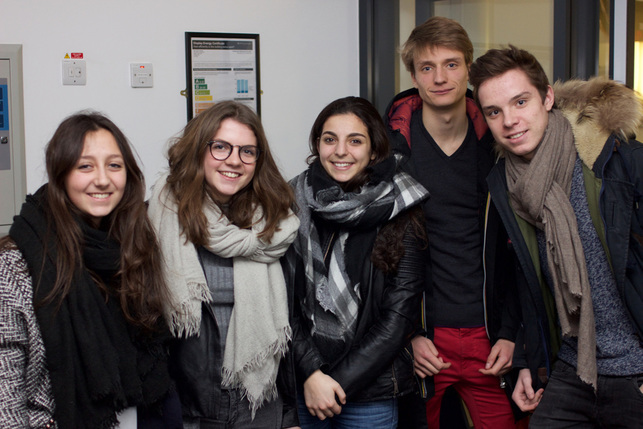
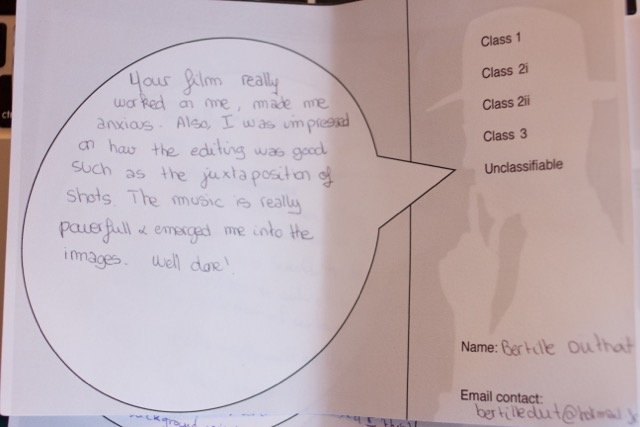
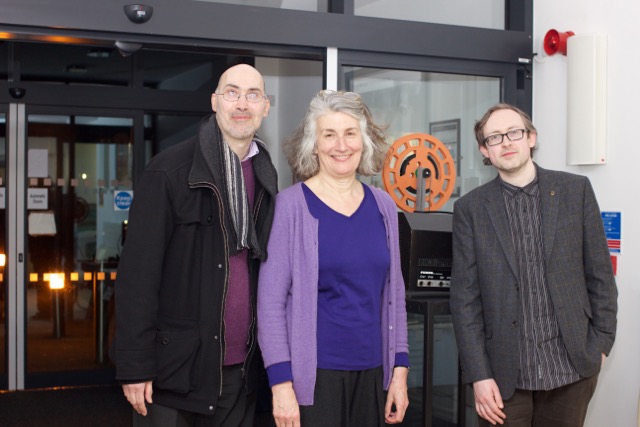
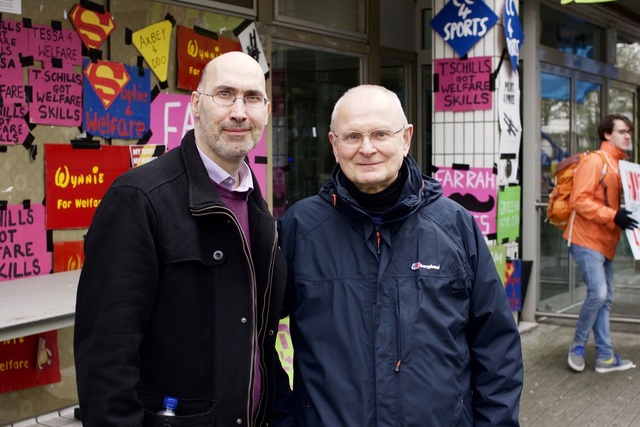

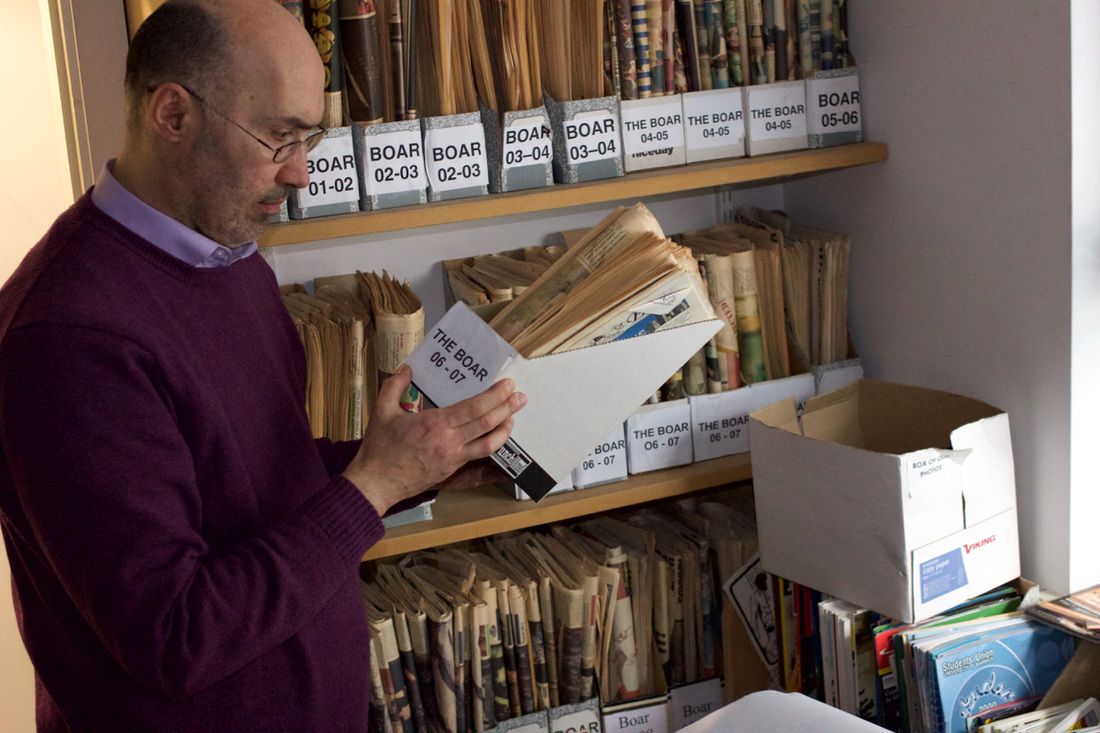
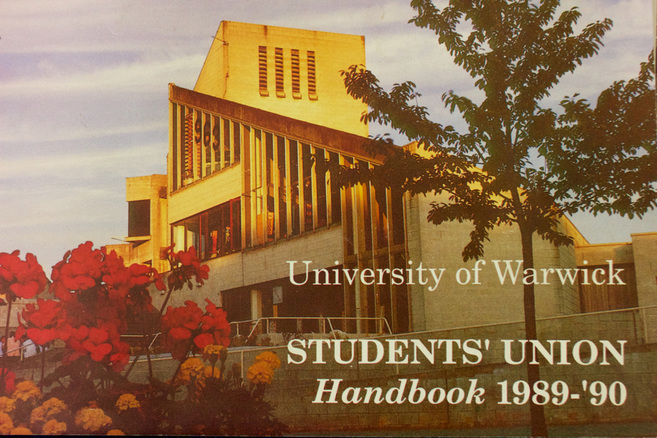
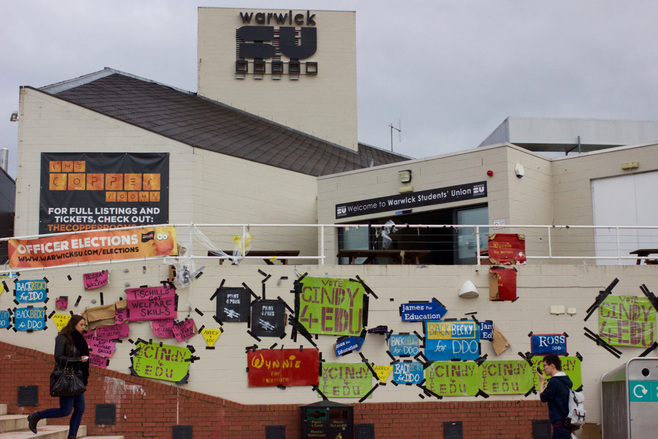

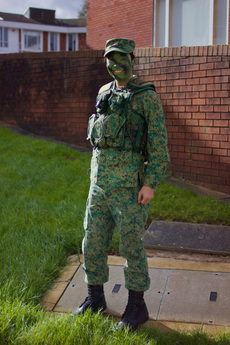
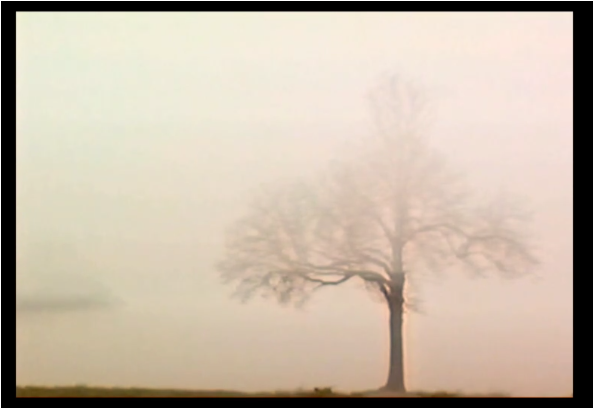

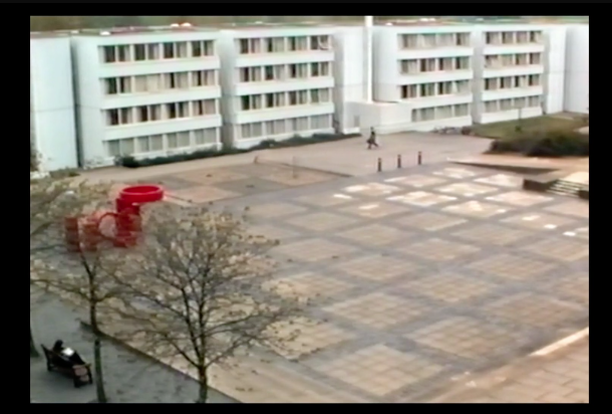

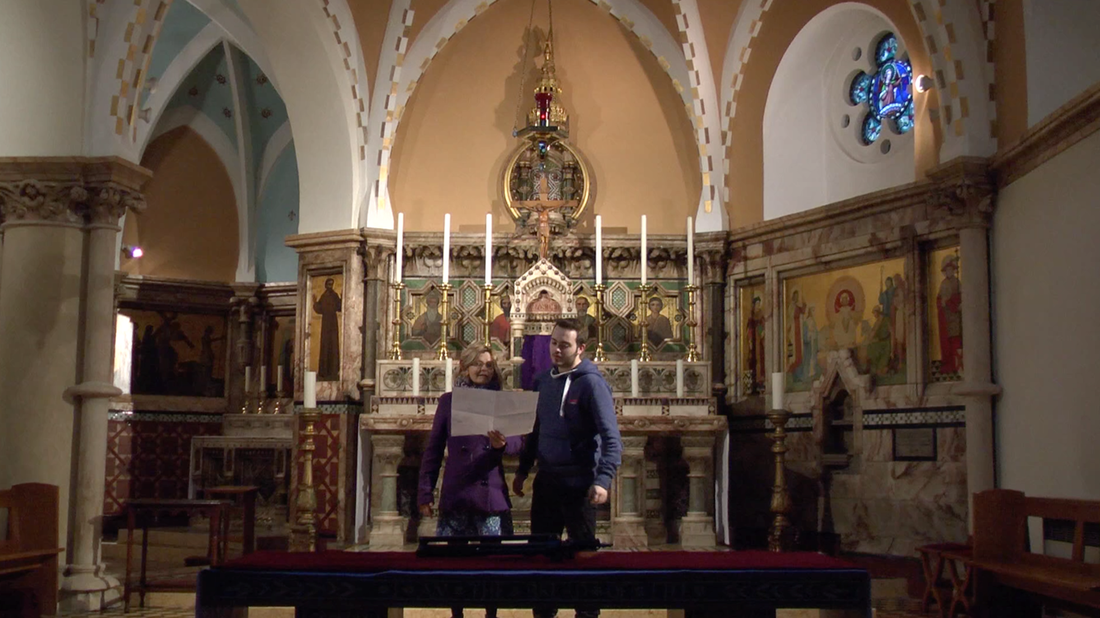
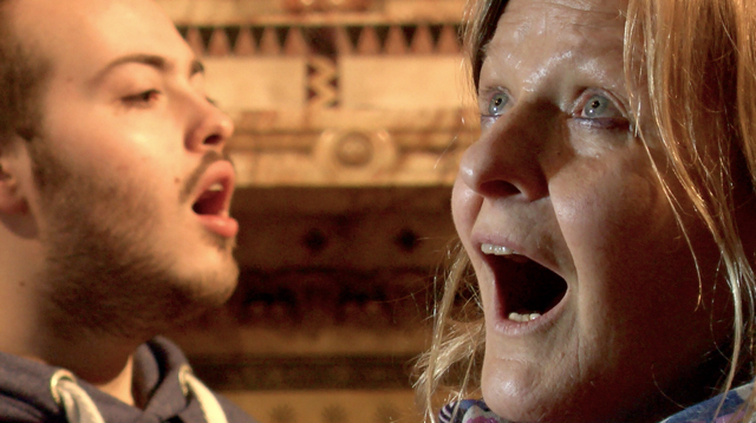
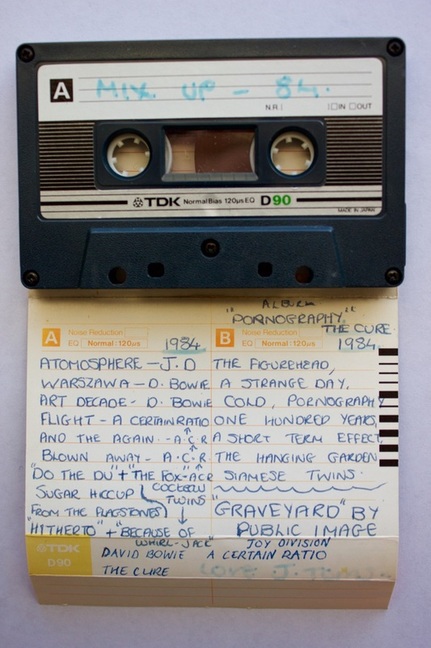
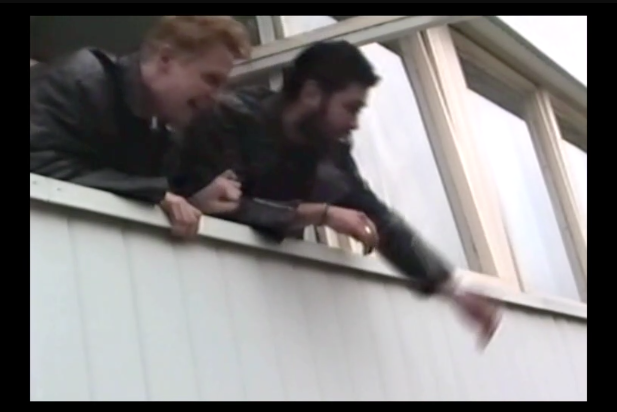
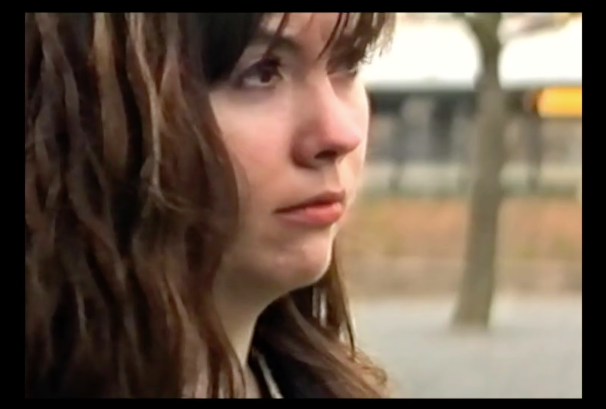
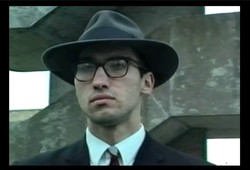
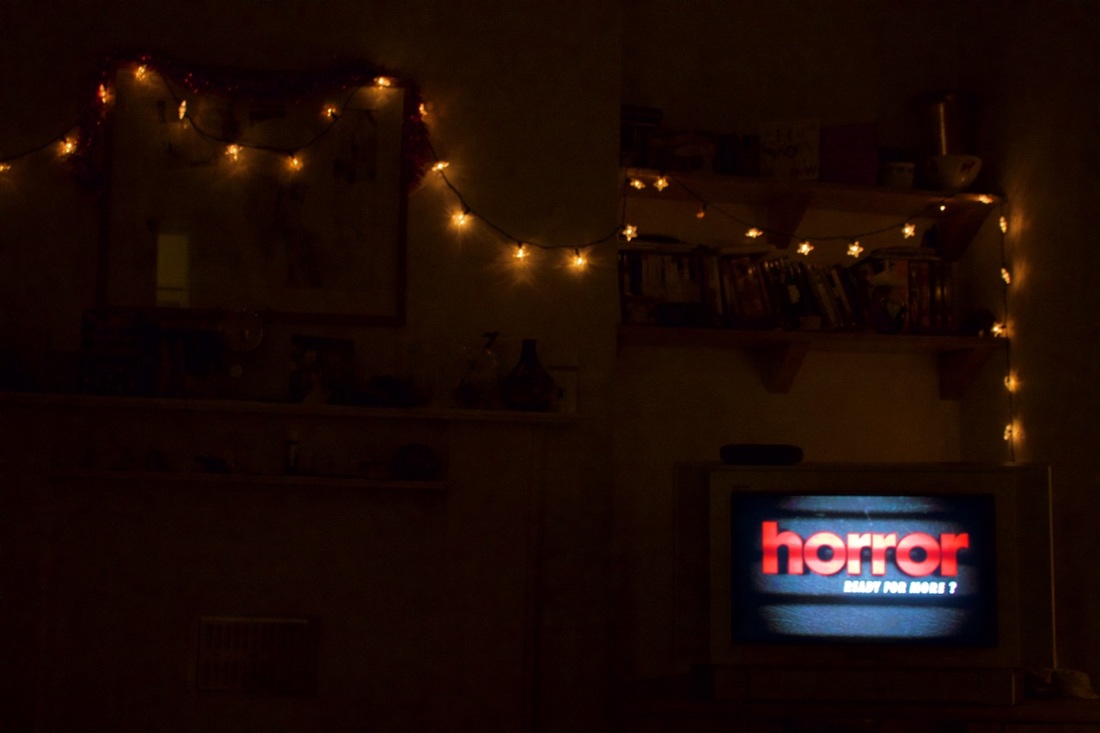
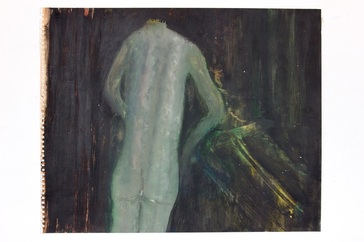
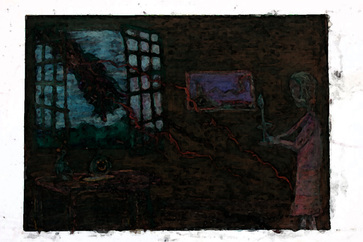
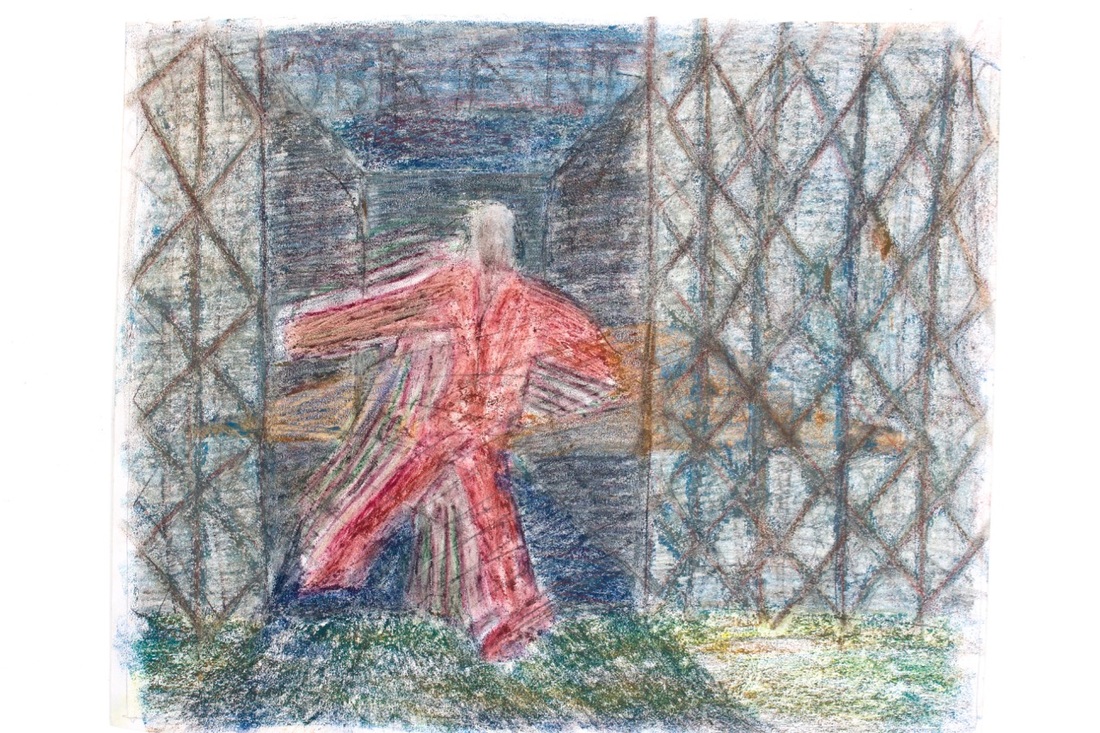
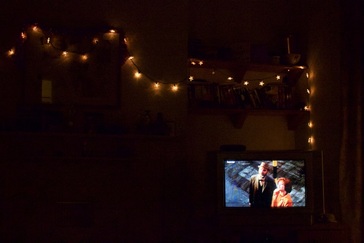
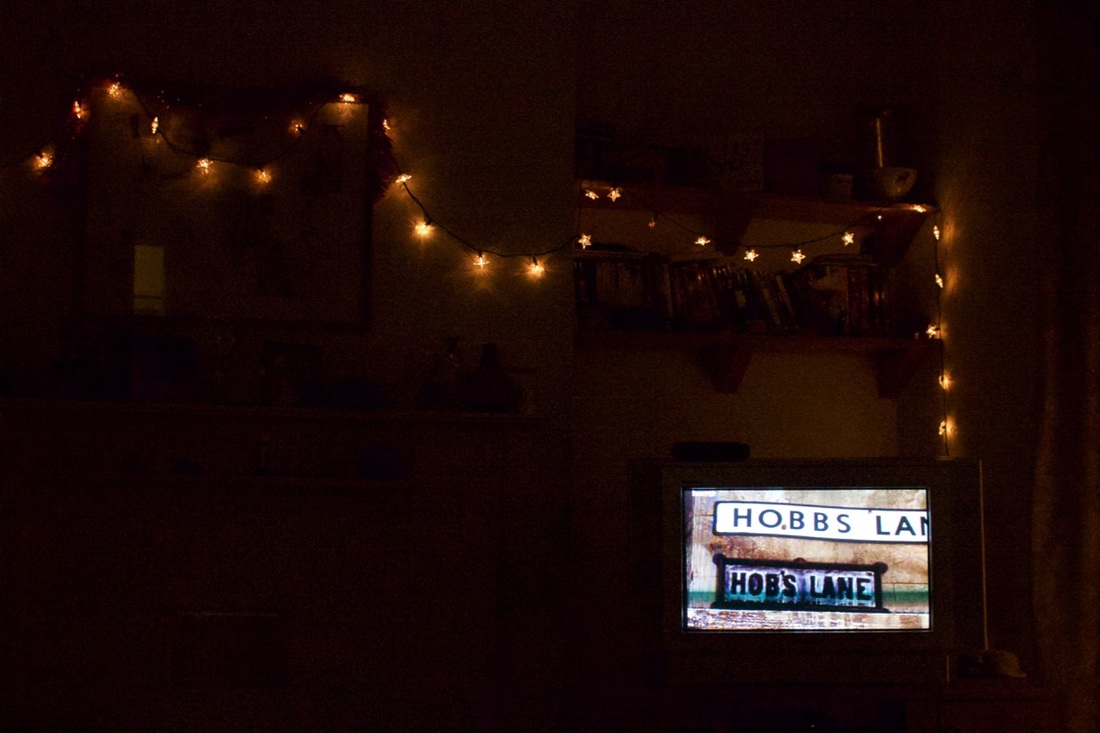
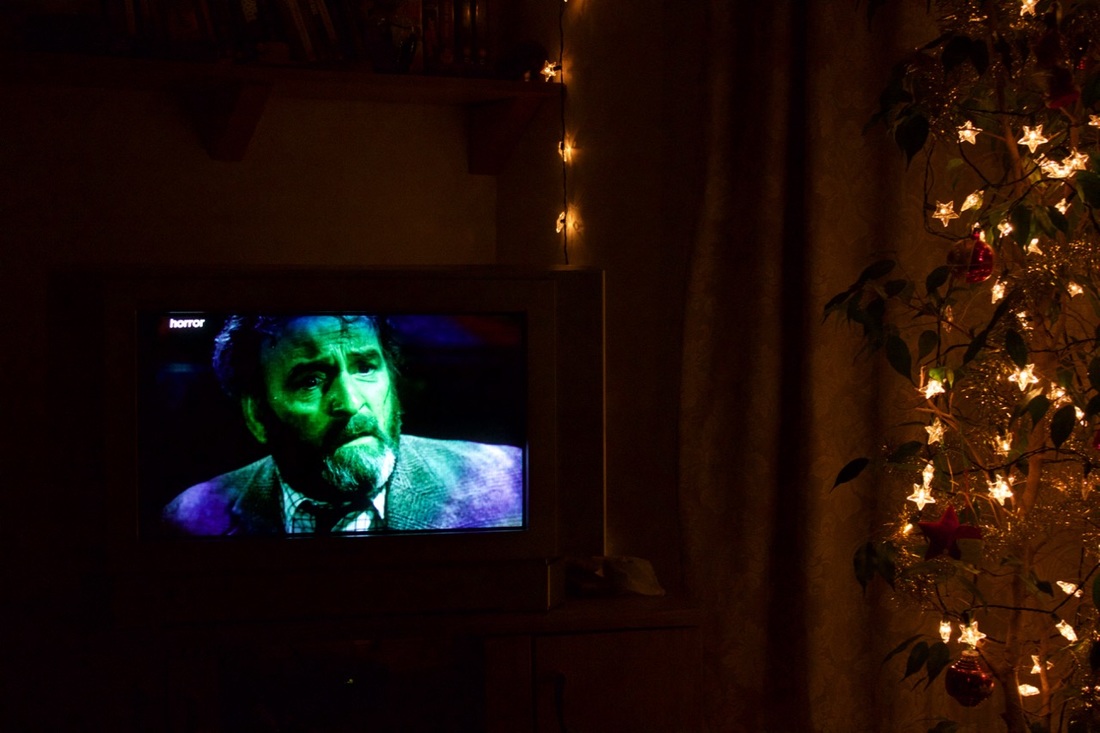
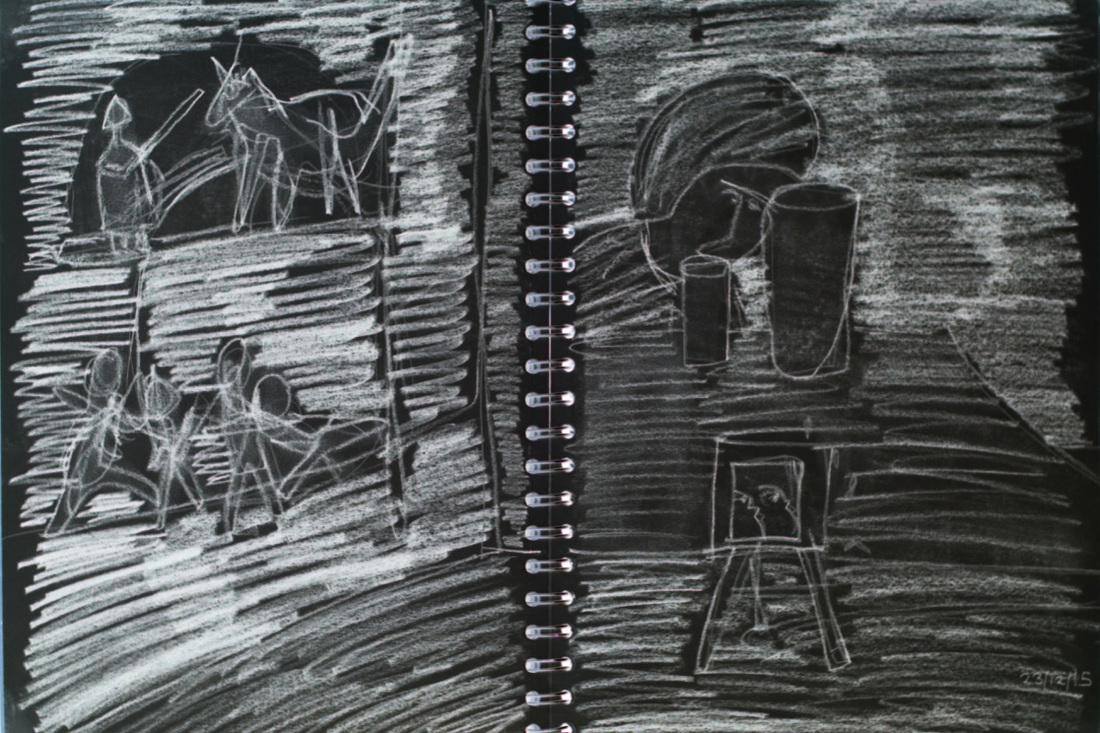
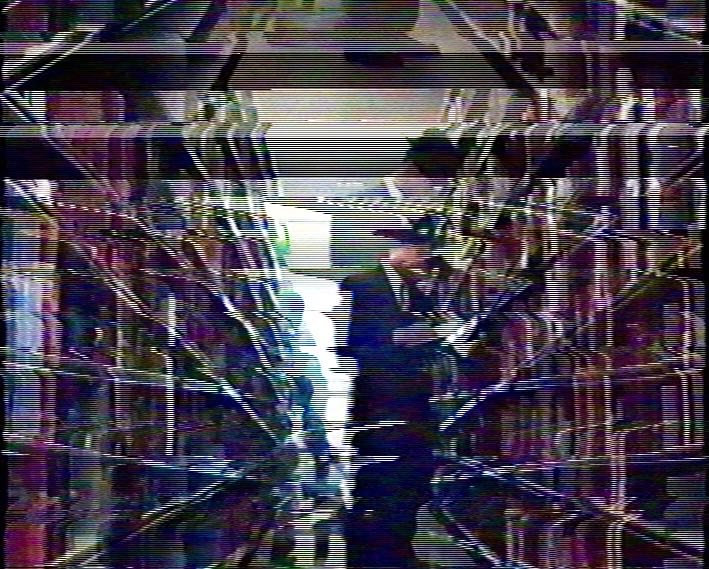
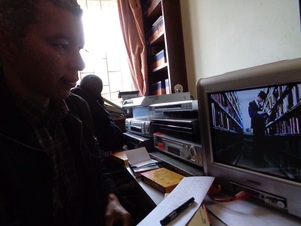
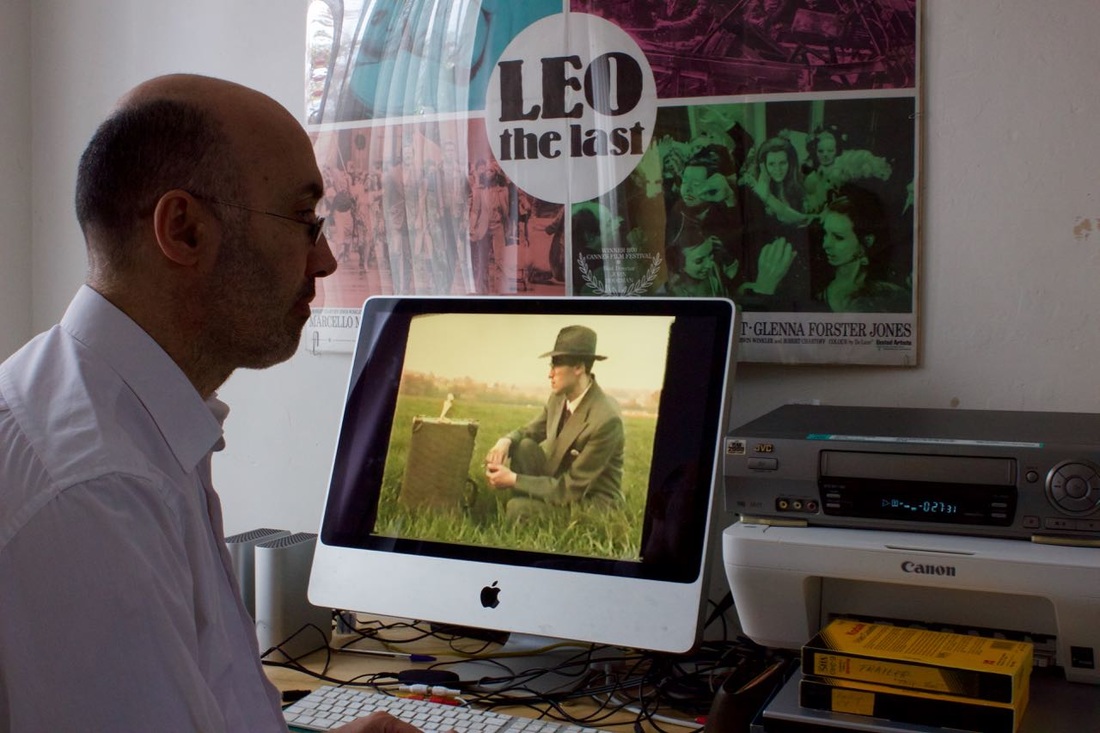
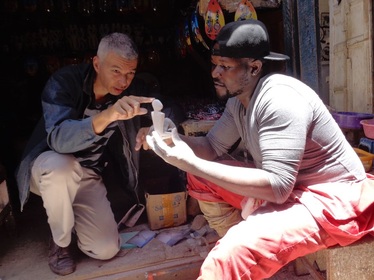
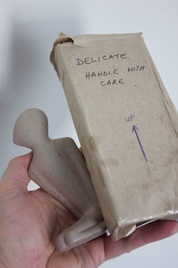
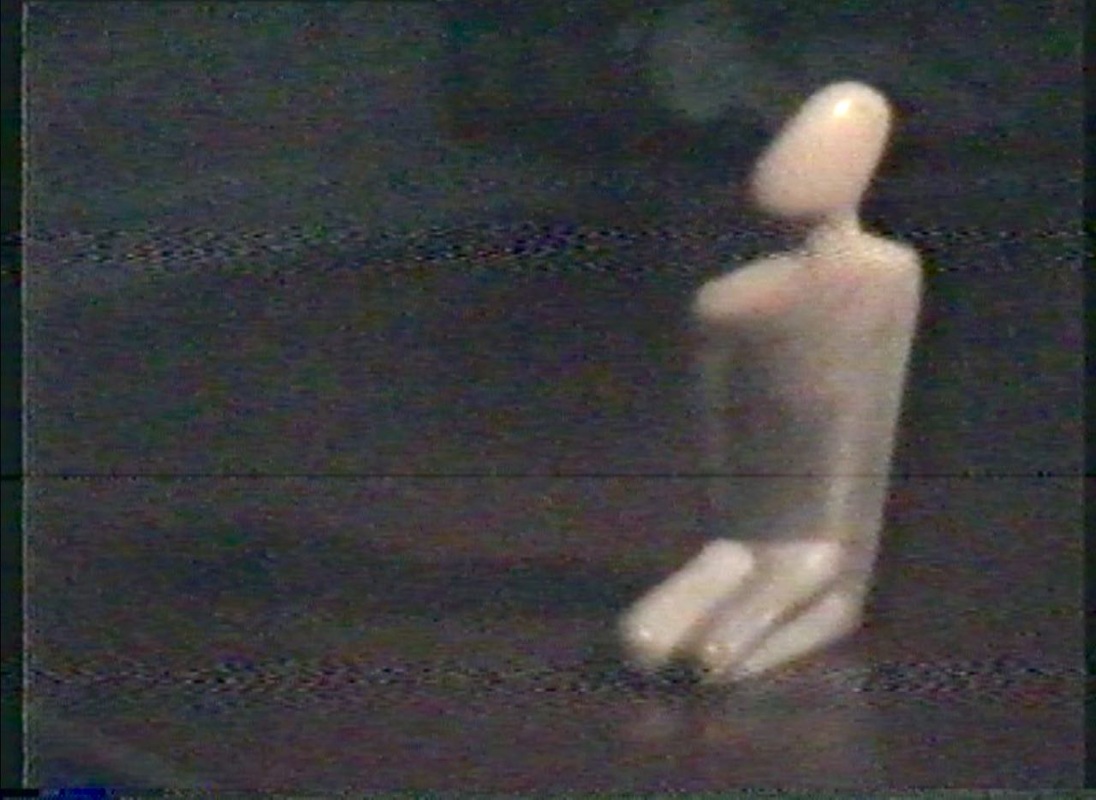
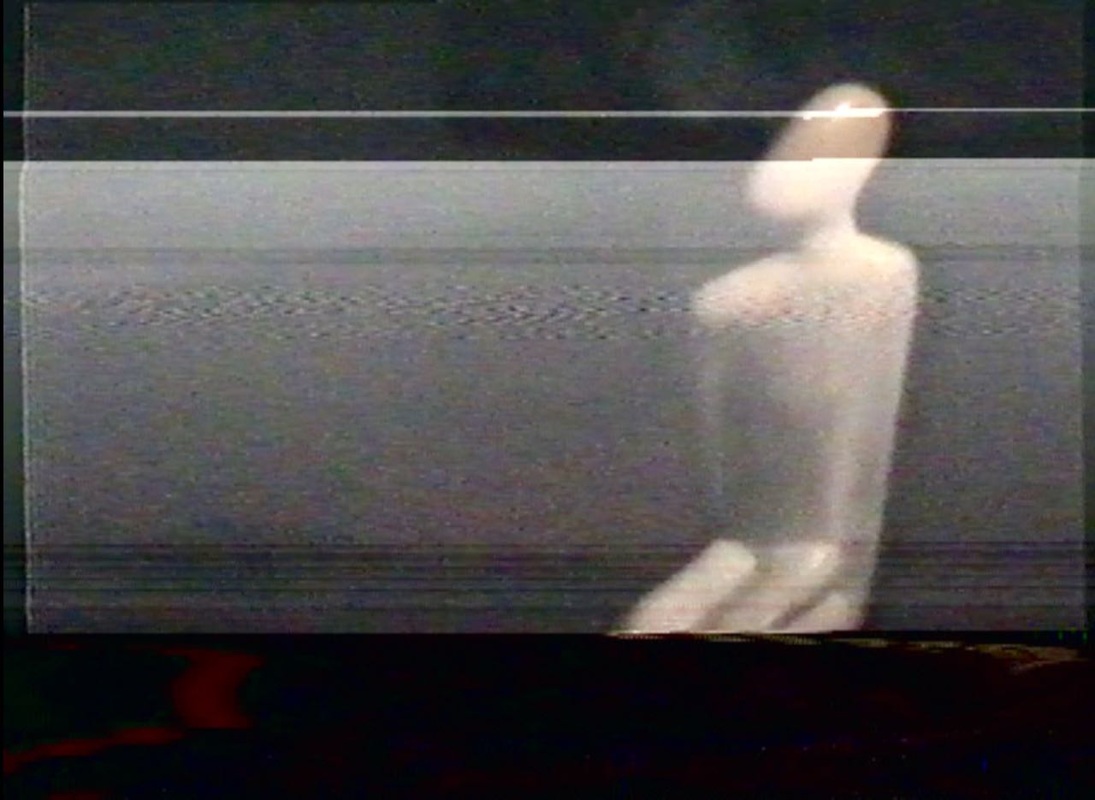
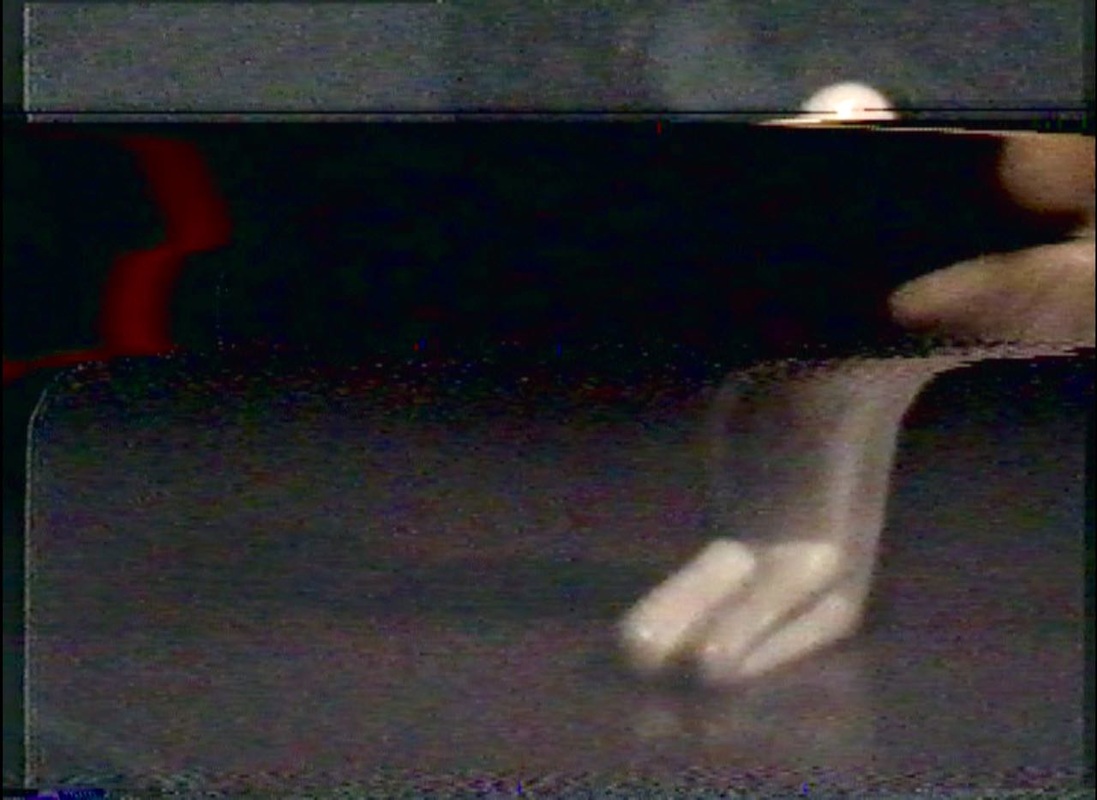
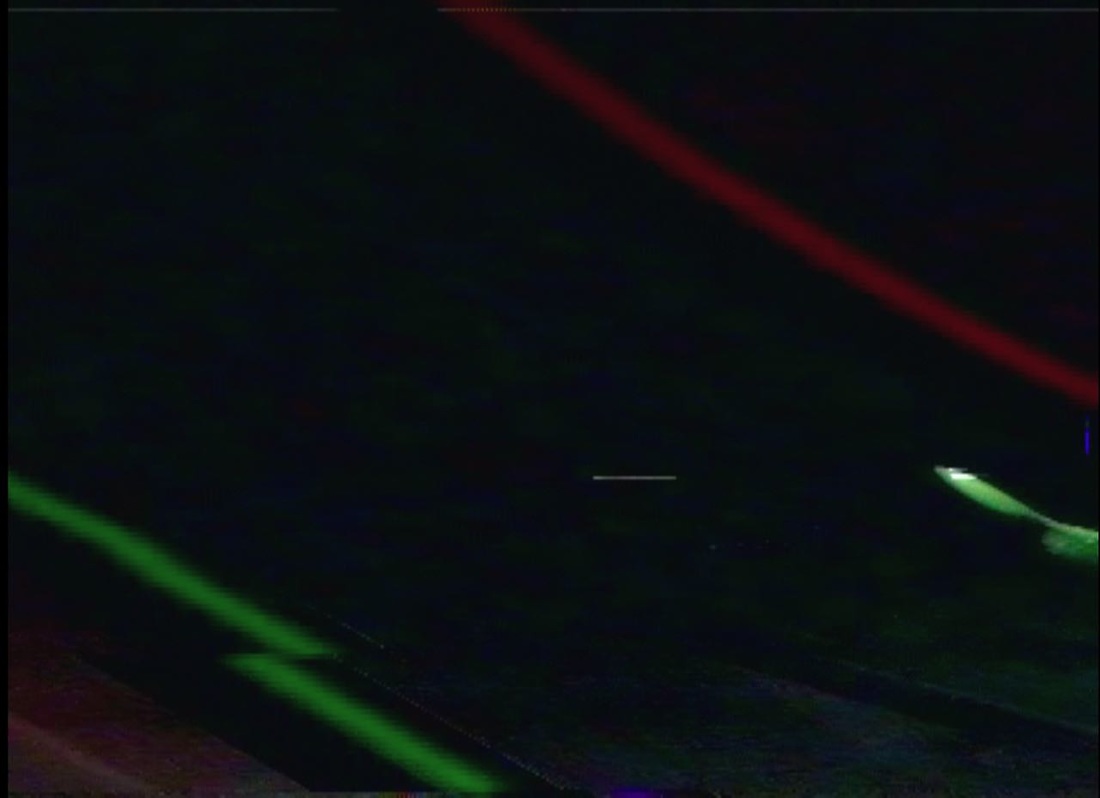

 RSS Feed
RSS Feed
